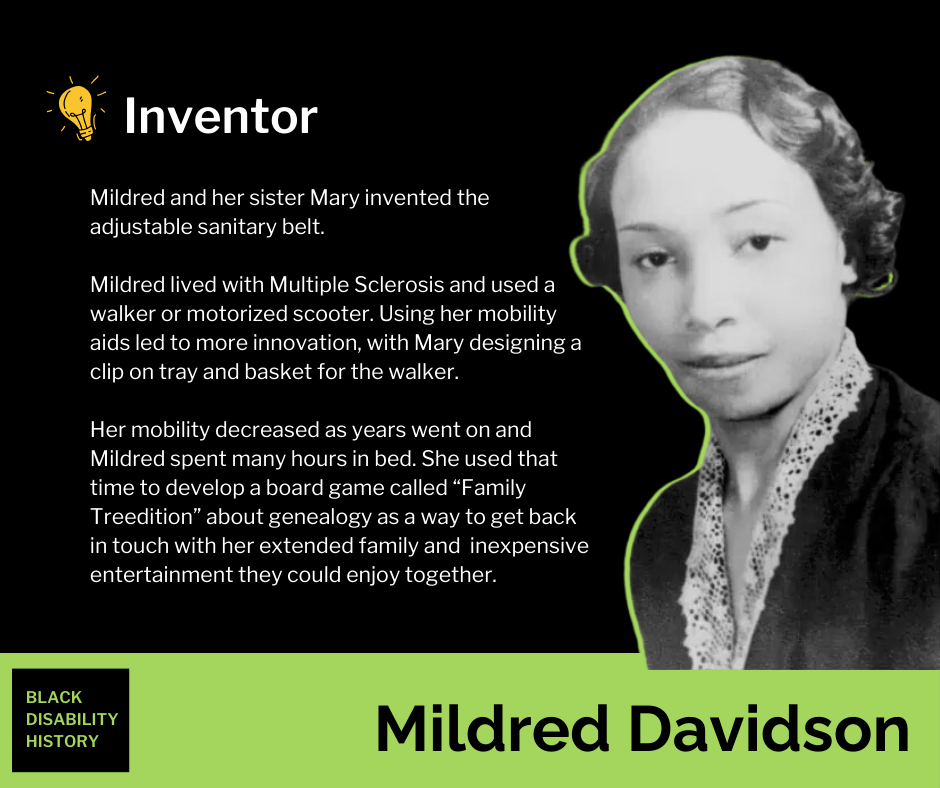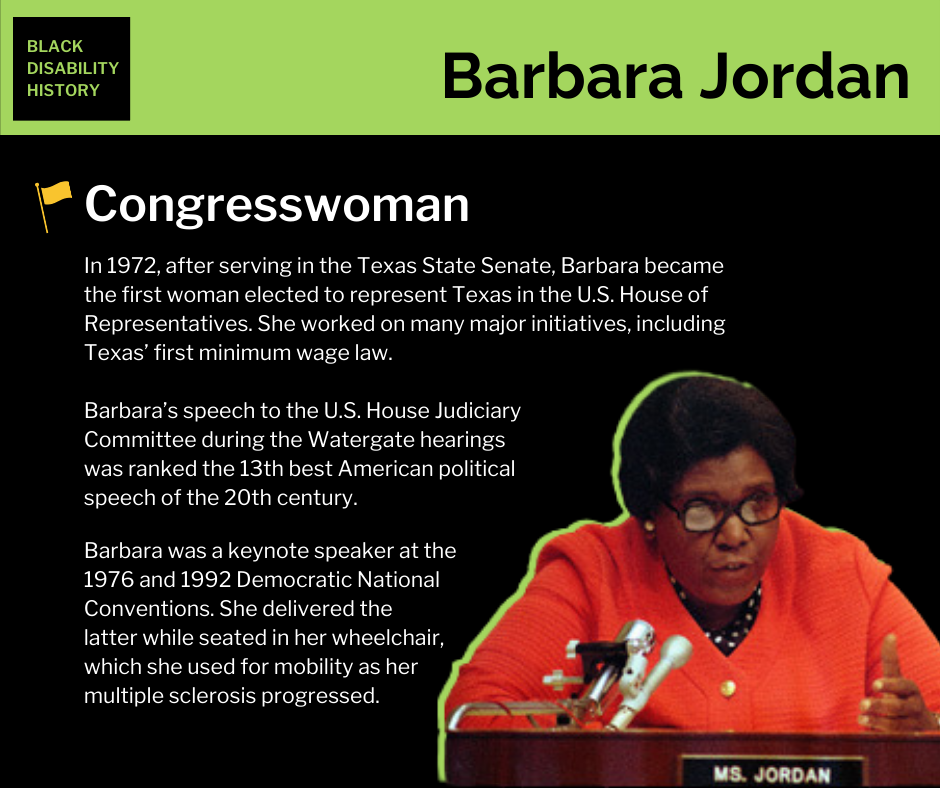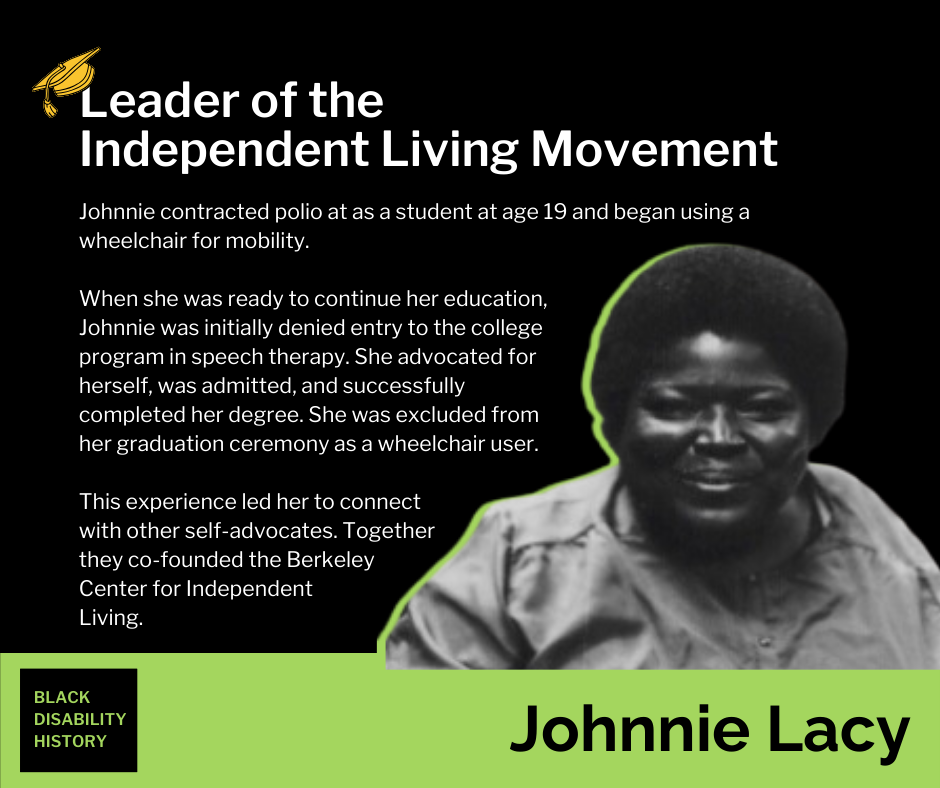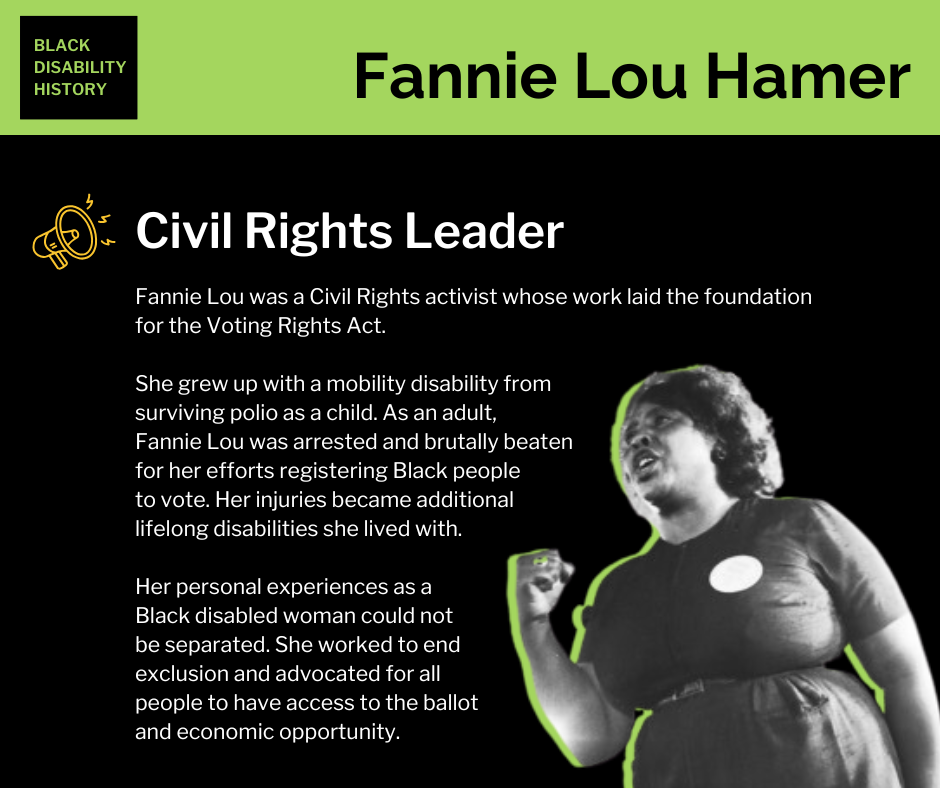Black Disabled History
Like disability, learning about Black history [… was …] an affirmative self-undertaking.
— Britney Wilson, Associate Professor of Law and Director of the Civil Rights & Disability Justice Clinic, New York Law School
Economic Opportunity for All
This year’s Black History Month theme is African Americans and Labor and we are shining a light on four Black disabled woman who fought against exclusion and worked for equal opportunity to good jobs for all.

Mildred Davidson
Inventor
Mildred and her sister Mary invented the adjustable sanitary belt.
Mildred lived with Multiple Sclerosis and used a walker or motorized scooter. Using her mobility aids led to more innovation, with Mary designing a clip-on tray and basket for the walker.
Her mobility decreased as years went on and Mildred spent many hours in bed. She used that time to develop a board game called “Family Treedition” about genealogy as a way to get back in touch with her extended family and inexpensive entertainment they could enjoy together.

Barbara Jordan
Congresswoman
In 1972, after serving in the Texas State Senate, Barbara became the first woman elected to represent Texas in the U.S. House of Representatives. She worked on many major initiatives, including Texas’ first minimum wage law.
Barbara’s speech to the U.S. House Judiciary Committee during the Watergate hearings was ranked the 13th best American political speech of the 20th century.
Barbara was a keynote speaker at the 1976 and 1992 Democratic National Conventions. She delivered the latter while seated in her wheelchair, which she used for mobility as her multiple sclerosis progressed.

Johnnie Lacy
Leader of the Independent Living Movement
Johnnie contracted polio at as a student at age 19 and began using a wheelchair for mobility. When she was ready to continue her education,
Johnnie was initially denied entry to the college program in speech therapy. She advocated for herself, was admitted, and successfully completed her degree. She was excluded from her graduation ceremony as a wheelchair user.
This experience led her to connect with other self-advocates. Together they co-founded the Berkeley Center for Independent Living.

Fannie Lou Hamer
Civil Rights Leader
Fannie Lou was a Civil Rights activist whose work laid the foundation for the Voting Rights Act.
She grew up with a mobility disability from surviving polio as a child. As an adult, Fannie Lou was arrested and brutally beaten for her efforts registering Black people to vote. Her injuries became additional lifelong disabilities she lived with.
Her personal experiences as a Black disabled woman could not be separated. She worked to end exclusion and advocated for all people to have access to the ballot and economic opportunity.
Read more: How Fannie Lou Hamer’s Disability Informed Her Fight for Voting Rights (The 19th*)
Learn More
Attend:
- Black Disabled Leadership: Essential Yet Overlooked (live webinar hosted by the Disability & Philanthropy Forum)
Read:
- 17 Black Disability Activists and Advocates (Disability Rights Florida)
- Honoring the Contributions of Black Leaders with Disabilities (U.S. Department of Labor Blog)
- Major Keys (Disability Visibility Project)
- The Overlooked History of Black Disabled People (Rewire News Group)
- Why Black Disabled History Matters (World Institute on Disability)
Watch:
- Disability Justice and Labor Rights (recorded panel discussion)
- I am DOL: Schedule A as a Pathway for Working at DOL
Sources:
Mildred Davidson: 504 W Main, South Cook Intermediate Service Center, and BoardGame Geek.
Festival graphic at top of page: Association for the Study of African American Life and History
Bayard Rustin was the principal organizer of the March on Washington for Jobs and Freedom in 1963.
Jaribu Hill is a Civil and Human Rights Attorney. She is Founder and Executive Director of the Mississippi Workers’ Center for Human Rights.



